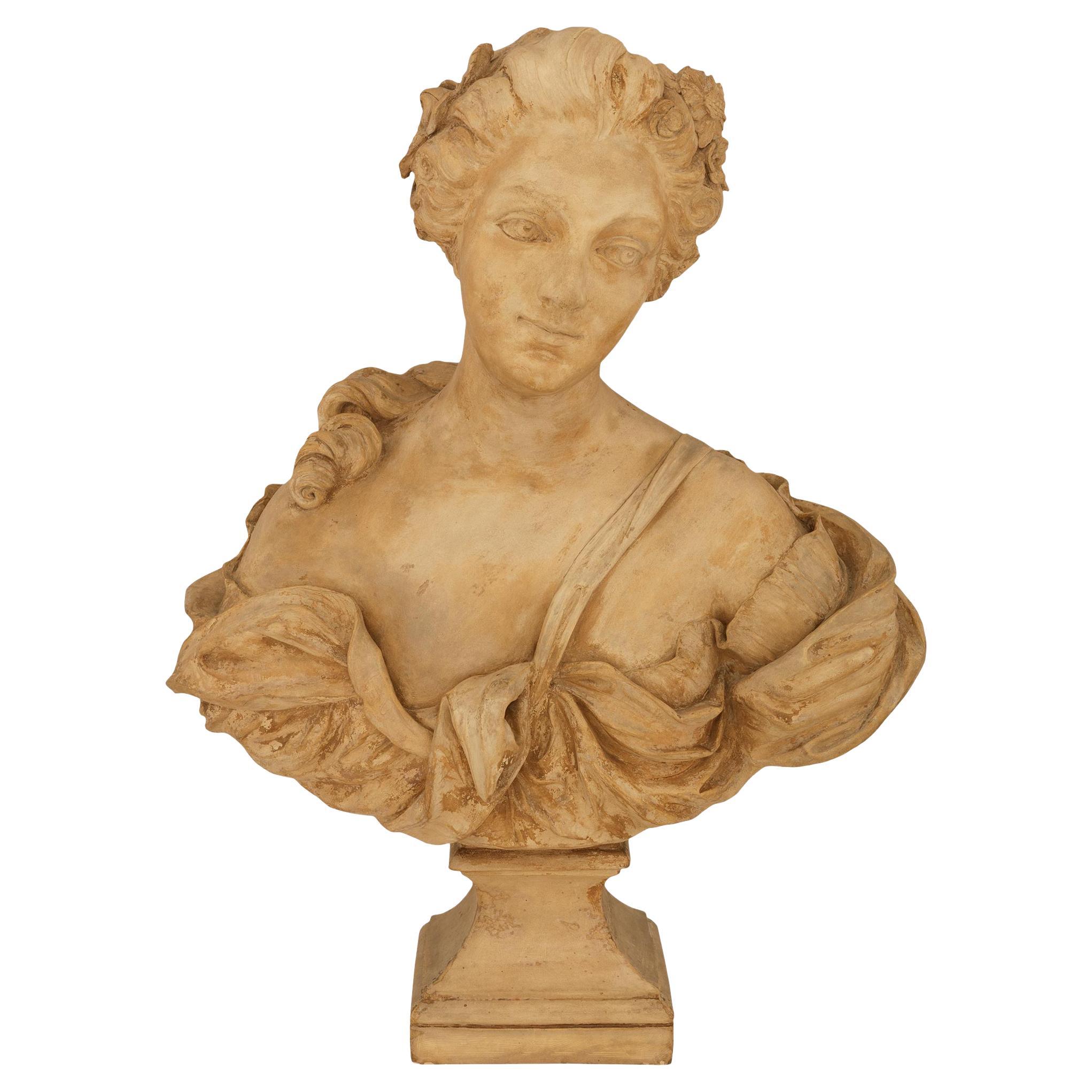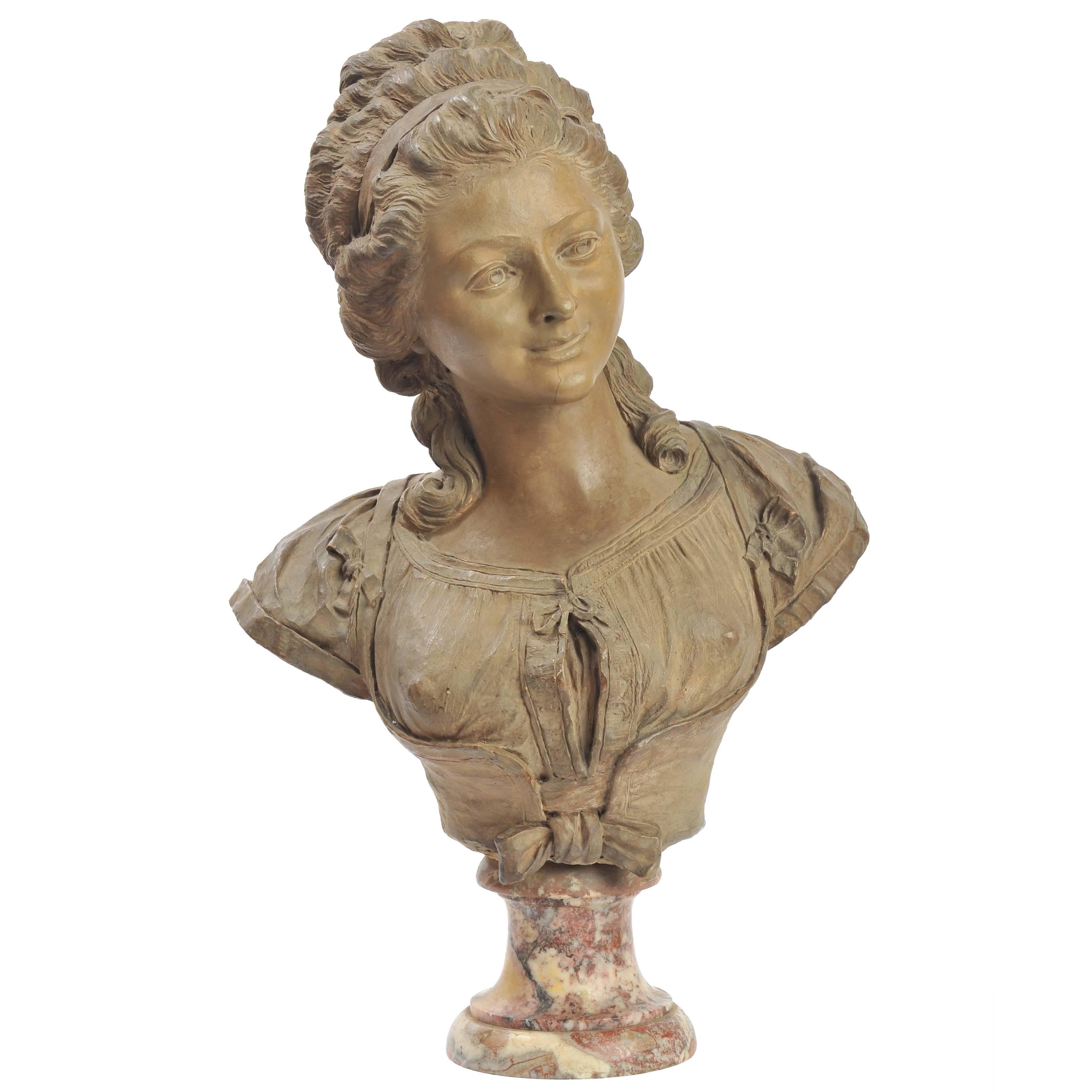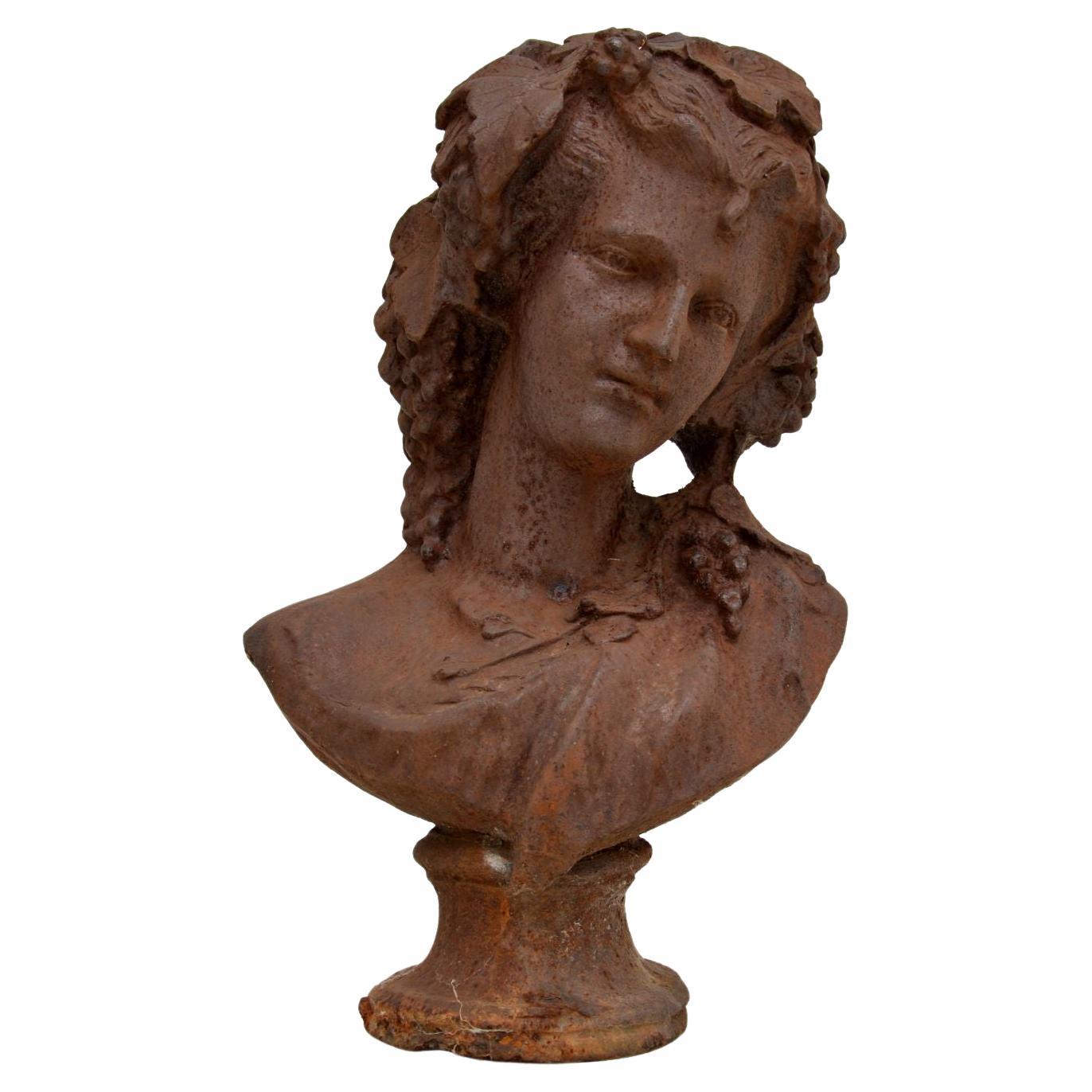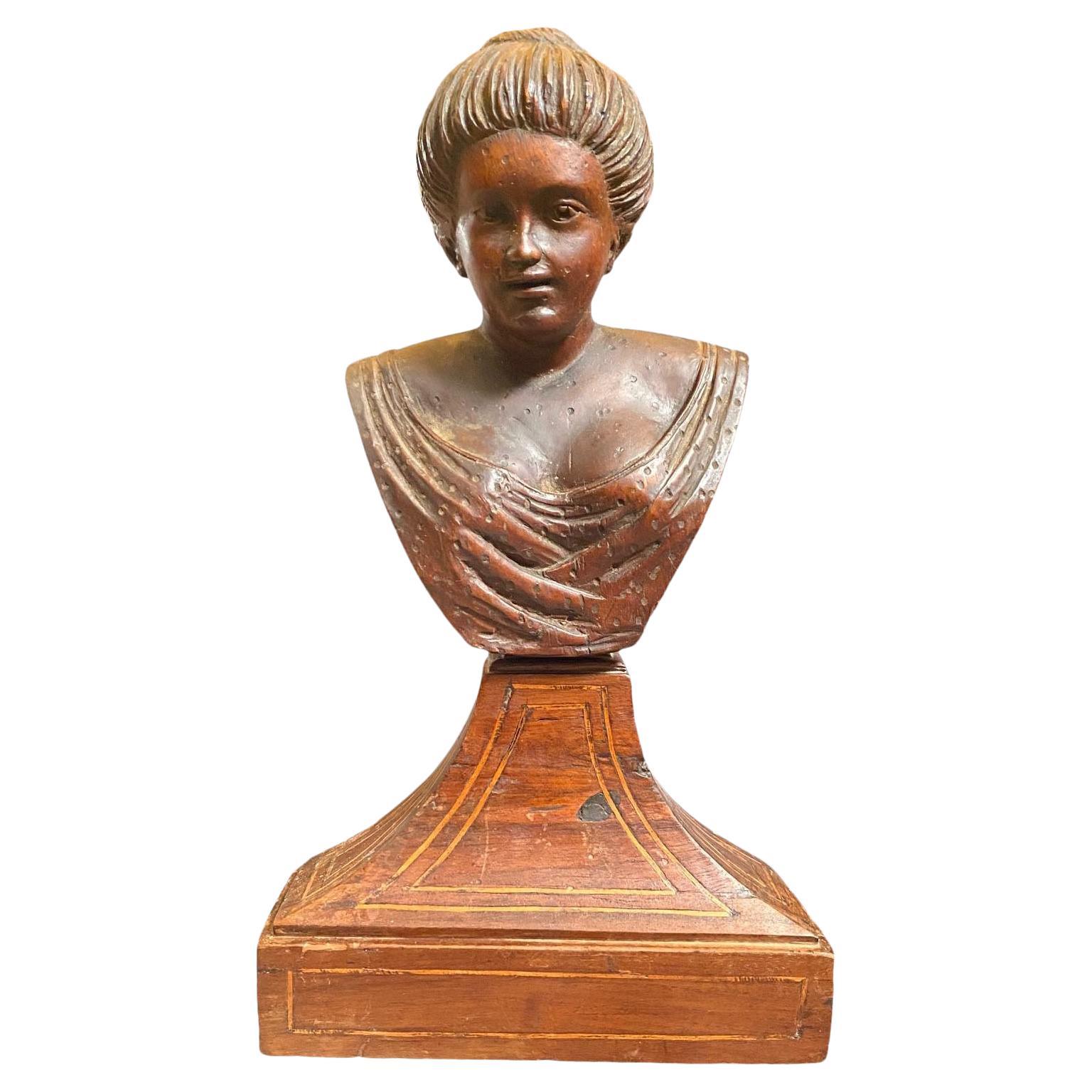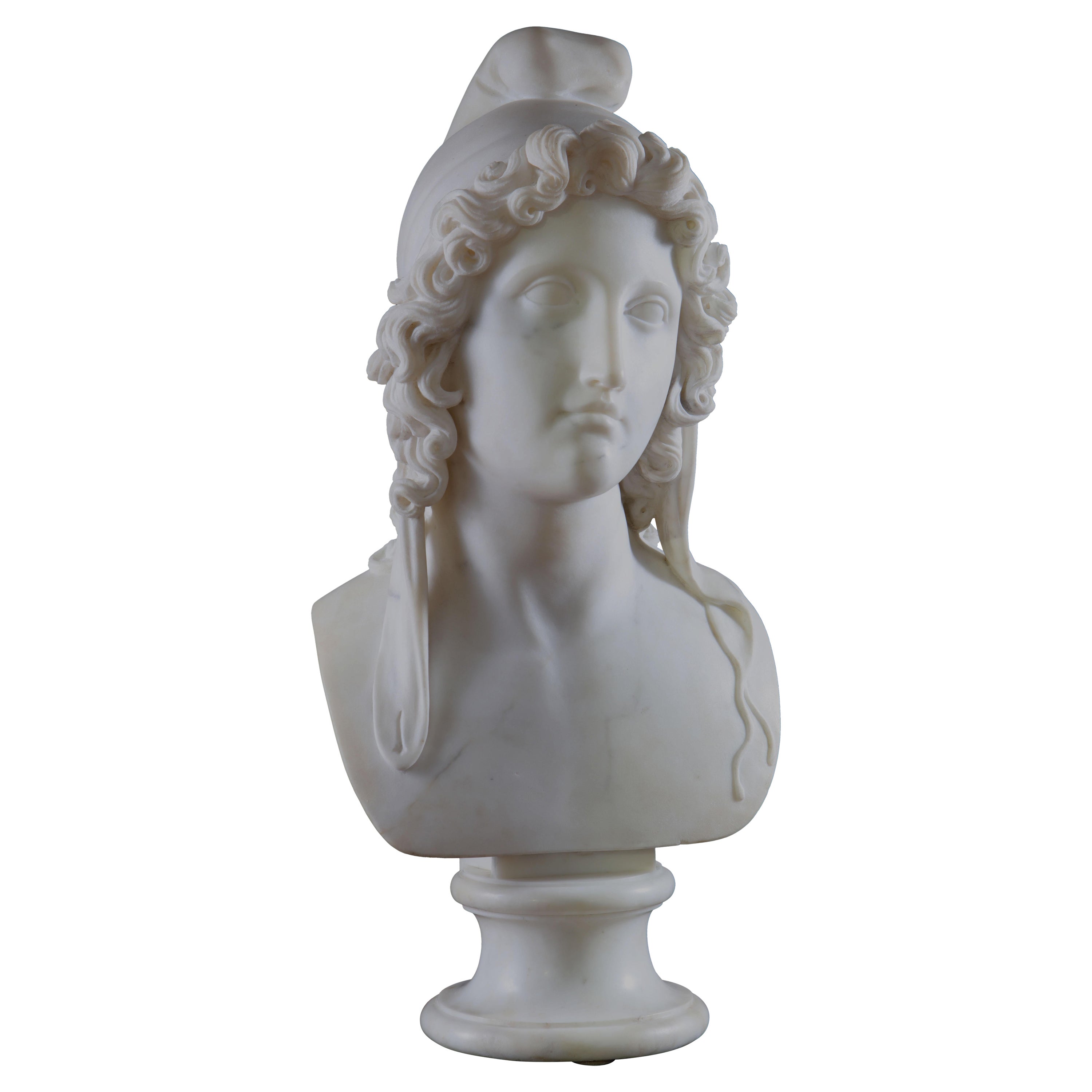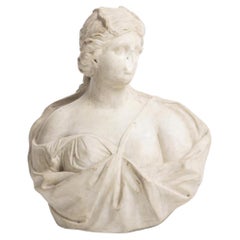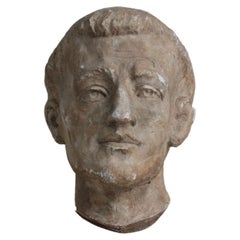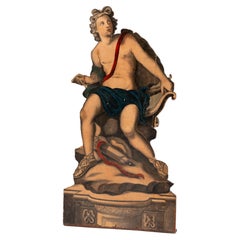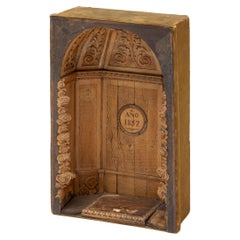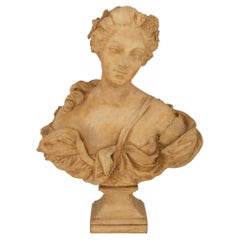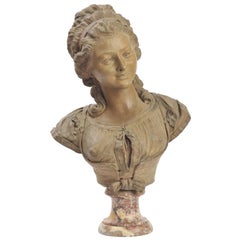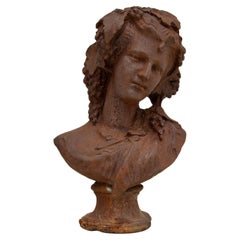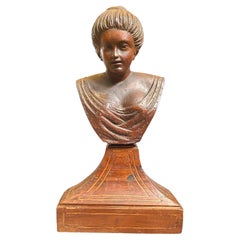Items Similar to 19th Century Bust Mold Representing the Effigy of the French Republic-"Marianne"
Want more images or videos?
Request additional images or videos from the seller
1 of 11
19th Century Bust Mold Representing the Effigy of the French Republic-"Marianne"
$10,760.54per set
£7,966.05per set
€9,000per set
CA$14,889.90per set
A$16,415.77per set
CHF 8,588.20per set
MX$201,391.05per set
NOK 108,108.46per set
SEK 101,098.51per set
DKK 68,556.48per set
About the Item
The effigy represents "Marianne," the national symbol of the French Republic, embodying liberty, equality, and fraternity. This particular artifact is a large plaster mold used to create a bust of Marianne, a prominent figure in French iconography. The mold is divided into two parts, corresponding to the front and back of the bust, allowing for detailed casting. The initials "R.F.," standing for "République Française" (French Republic), are prominently displayed, emphasizing the connection to the nation's republican values. Originating from 19th century France, this mold reflects the period's artistic and political significance, capturing the spirit of the era through its representation of Marianne. The size and craftsmanship suggest it was intended for creating a statue of notable size, likely for public display or a significant institutional setting.
- Dimensions:Height: 45.28 in (115 cm)Width: 22.05 in (56 cm)Depth: 11.03 in (28 cm)
- Sold As:Set of 2
- Materials and Techniques:
- Place of Origin:
- Period:
- Date of Manufacture:19th Century
- Condition:
- Seller Location:Lisboa, PT
- Reference Number:1stDibs: LU7365241401862
About the Seller
5.0
Vetted Professional Seller
Every seller passes strict standards for authenticity and reliability
Established in 2018
1stDibs seller since 2022
14 sales on 1stDibs
Typical response time: 6 hours
- ShippingRetrieving quote...Shipping from: Lisboa, Portugal
- Return Policy
Authenticity Guarantee
In the unlikely event there’s an issue with an item’s authenticity, contact us within 1 year for a full refund. DetailsMoney-Back Guarantee
If your item is not as described, is damaged in transit, or does not arrive, contact us within 7 days for a full refund. Details24-Hour Cancellation
You have a 24-hour grace period in which to reconsider your purchase, with no questions asked.Vetted Professional Sellers
Our world-class sellers must adhere to strict standards for service and quality, maintaining the integrity of our listings.Price-Match Guarantee
If you find that a seller listed the same item for a lower price elsewhere, we’ll match it.Trusted Global Delivery
Our best-in-class carrier network provides specialized shipping options worldwide, including custom delivery.More From This Seller
View AllItalian Renaissance marble bust of Diana, 16th century
Located in Lisboa, PT
his exquisite marble bust represents Diana, the Roman goddess of the hunt, the moon, and nature, and is a remarkable example of Italian Renaissance sculpture from the 16th century. C...
Category
Antique 16th Century Italian Busts
Materials
Marble
Study of Male Head in Patinated Plaster, Portugal Sec. xx
Located in Lisboa, PT
A male head study from the twentieth-century, in patinated plaster, possibly depicting a head of a friar, or a Saint.
Patinated plaster sculpture is a process in which plaster is ap...
Category
20th Century Portuguese Schoolhouse Figurative Sculptures
Materials
Plaster
XVIII Century Welcome Figure
Located in Lisboa, PT
A welcome figure, was often used in the 18th century in Europe as a decorative piece intended to greet visitors. These figures, crafted from wood and hand-painted, were usually posit...
Category
Antique 18th Century European Screens and Room Dividers
Materials
Wood
Baroque-style Carved Wooden Niche
Located in Lisboa, PT
A Spanish Baroque-style carved wooden niche with velvet is a splendid example of the opulence and detailed craftsmanship characteristic of Baroque art.
The carvings include detailed...
Category
Antique 19th Century Spanish Baroque Architectural Elements
Materials
Velvet, Wood
$2,486 Sale Price
35% Off
16th Century Virgin Mary and Saint John, Pair of Linden Wood Sculptures
Located in Lisboa, PT
We present you these two icons Virgin Mary and Saint John, pair of linden wood sculptures. Bologna 15th century.
The Caloust Gulbenkian Foundation in Lisbon, Portugal museum has an i...
Category
Antique 16th Century Italian Rustic Figurative Sculptures
Materials
Wood
Pair of 20th-century Decorative Urns Covered in Plaster
Located in Lisboa, PT
This pair of European decorative urns from the 20th century showcases an elegant and timeless neoclassical design. Crafted with a plaster-covered finish, they exhibit a refined aesth...
Category
20th Century European Urns
Materials
Plaster
$1,476 Sale Price / set
35% Off
You May Also Like
A French 19th century Terra Cotta bust of Madame de Pompadour
Located in West Palm Beach, FL
An elegant and most decorative French 19th century Terra Cotta bust of Madame de Pompadour. This charming bust is raised on a square tapered socle support with mottled designs and a ...
Category
Antique 19th Century French Busts
Materials
Terracotta
19th Century French Terracotta Bust
Located in Brighton, Sussex
A good quality French 19th patinated terracotta bust of a classical lady, mounted on a Rouge marble sockel.
Category
Antique 19th Century French Baroque Busts
Materials
Terracotta
Antique Cast Iron Bust of Young Woman
Located in London, GB
A charming and beautiful antique cast iron bust depicting a young woman with grapes in her hair. This was made in England, its hard to date exactly but we would say it is from around...
Category
Antique Early 1900s British Victorian Busts
Materials
Iron
19th Century Italian Wooden Sculpture of Woman's Bust on a Base
Located in Catania, Sicilia
Italian wooden sculpture of a mid 19th century woman's bust with purfled base. High quality hand-crafted item.
Category
Antique Mid-19th Century Italian Charles X Busts
Materials
Wood
French Antique Terracotta Bust
Located in Austin, TX
Sculptural bust from France hand-crafted in terracotta. This finely detailed vintage work of art features the likeness of a woman and has a wonderful warm tone.
Category
Vintage 1920s French Art Deco Busts
Materials
Terracotta
19th Century Bust Of Paris
Located in Reepham, GB
Carrara marble classical bust of Paris wearing a Phrygian cap after Antonio Canova 1757–1822
One of the great Neoclassical sculptor Canova's most famous...
Category
Antique 19th Century Busts
Materials
Carrara Marble
$33,067
